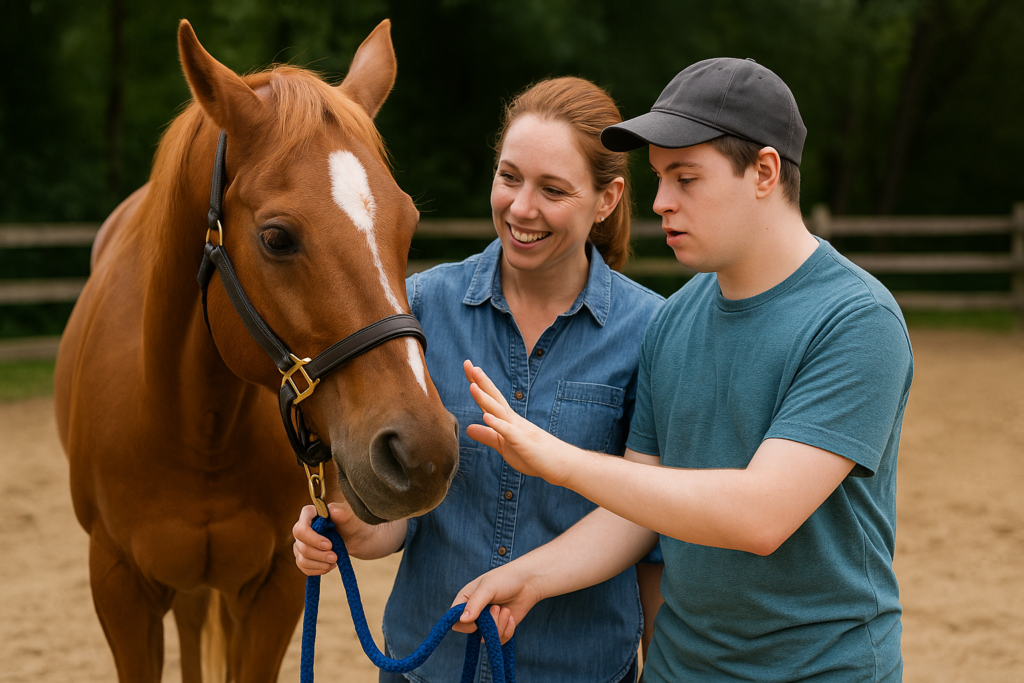
Equine therapy has been steadily gaining recognition in Australia as an innovative form of support for individuals navigating the National Disability Insurance Scheme (NDIS). More than just time spent with horses, these programs focus on structured activities that foster emotional resilience, practical skills, and greater independence. For many participants, equine therapy bridges the gap between traditional therapies and real-world learning opportunities.
What is Equine Therapy in the NDIS Context?
Equine therapy, often referred to as equine-assisted learning, involves guided interactions between participants and horses under the supervision of trained facilitators. Within the NDIS framework, this form of therapy may be accessed through categories such as Capacity Building or Improved Daily Living. Its unique approach combines physical, emotional, and social development in a way that few other supports can achieve.
Participants of all ages may benefit from equine therapy, whether they are children learning emotional regulation, teenagers developing communication skills, or adults building confidence in everyday routines. Horses respond intuitively to human behavior, offering immediate, non-judgmental feedback, which makes them effective partners in therapeutic growth.
For readers seeking deeper insights into the foundations of alternative care, related resources on mental health and wellness insights provide a useful starting point.
Emotional Growth Through Equine Interaction
Building Confidence and Self-Esteem
One of the most powerful aspects of equine therapy lies in its ability to nurture confidence. Tasks such as leading a horse, maintaining eye contact, or successfully completing a grooming routine may seem small, but for participants who struggle with self-doubt, these achievements represent meaningful milestones. The sense of accomplishment carries over into daily life, where participants often feel better prepared to face challenges.
Emotional Regulation and Stress Relief
Spending time with horses encourages participants to slow down, become present, and adjust their emotions to maintain calm interactions. Horses respond directly to tone of voice, posture, and emotional state, creating an environment where participants learn to manage stress and anxiety in a practical, immediate way. This mirrors techniques found in mindfulness practices, but with the added reward of engaging with a living, responsive partner.
Independence and Everyday Skills
Developing Responsibility
Equine therapy sessions involve structured routines such as feeding, grooming, and guiding horses. These tasks encourage responsibility and build predictable habits, helping participants transfer those skills into daily living activities like personal care, household chores, and time management.
Social Skills and Communication
Many equine therapy programs involve group activities, encouraging collaboration between participants, facilitators, and the horses themselves. This environment naturally fosters non-verbal communication, teamwork, and the ability to interpret body language, which can be transformative for those with communication challenges.
Physical Strength and Coordination
Activities such as grooming or leading a horse promote physical engagement that builds strength, coordination, and balance. While equine therapy is not designed as a substitute for physiotherapy, its physical benefits complement other supports, making it a versatile addition to an NDIS plan.
Real-Life Impact Stories
While each journey is unique, many participants have reported noticeable improvements after consistent equine therapy sessions. Children with sensory processing difficulties have shown calmer responses in everyday environments, while young adults with social anxiety have demonstrated more confidence when engaging with peers. These outcomes highlight the real-world applicability of equine therapy—progress achieved in the paddock often translates into greater independence and emotional strength at home, school, or work.
For more reading on personal transformation, building resilience through alternative methods offers broader insights into how non-traditional therapies contribute to growth.
Accessing Equine Therapy Through the NDIS
For families and individuals considering this pathway, equine therapy may be funded under NDIS plans that focus on capacity building and independence. The application process generally involves discussing goals with a plan manager and demonstrating how equine therapy aligns with those objectives.
For practical guidance and program details, Equine therapy NDIS services at Aligned Living provide an in-depth look at how structured sessions can be incorporated into an individual’s support plan. Their approach highlights how equine-assisted learning can be tailored to suit a wide variety of participant needs.
Why Equine Therapy Resonates with NDIS Participants
Equine therapy resonates strongly because it combines emotional, social, and practical benefits in a single experience. Participants not only learn how to interact with horses but also gain a stronger sense of self, improved regulation strategies, and skills for independent living. This makes equine therapy not just an enjoyable activity, but a genuinely meaningful component of disability support.
By working alongside horses, individuals develop patience, empathy, and resilience—qualities that may support long-term growth well beyond the therapy environment.
Conclusion: A Holistic Step Toward Growth
Equine therapy under the NDIS continues to expand as participants and families recognize the holistic benefits it offers. Beyond traditional approaches, it provides a path toward independence, confidence, and emotional well-being, giving participants a renewed sense of possibility in their everyday lives.